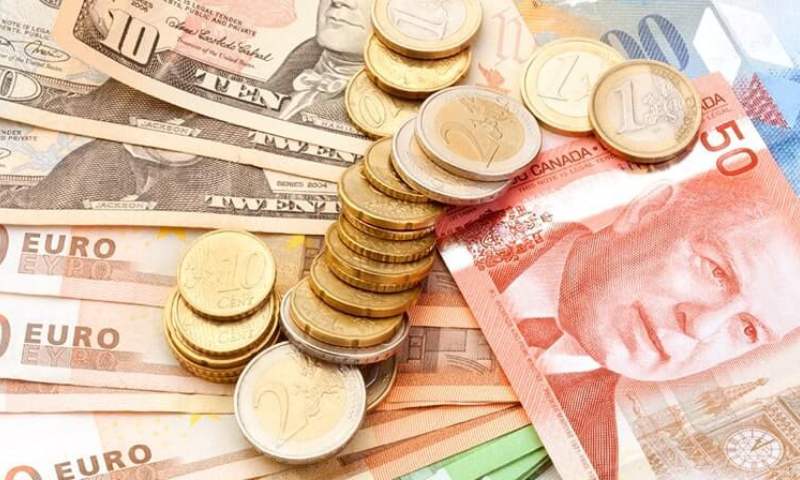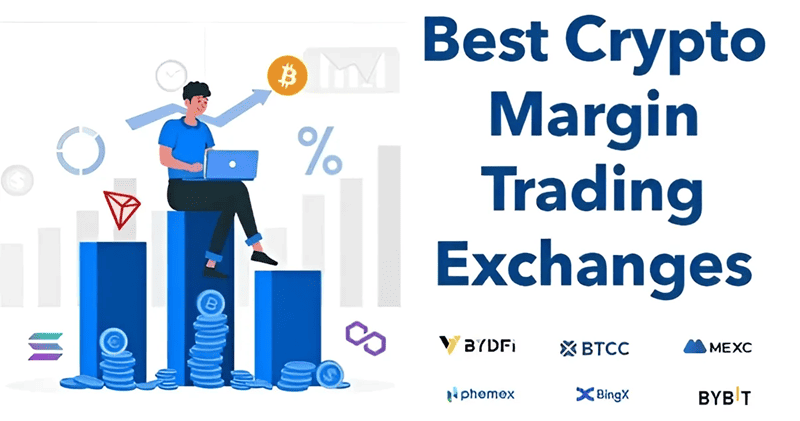Compare trading volume of different crypto exchanges: it’s not just a number’s game, it’s the pulse of the market. You want the best platform for your trades, right? Dive in as I rank the top exchanges, shedding light on who really reigns supreme in the crypto arena. No fluff, just the hard facts, and keen insights await. Ready? Let’s explore where the action is hottest and why it matters to your crypto journey.
Understanding Trading Volume in the Cryptocurrency Market
The Importance of Trading Volume Analysis in Crypto
Let’s dig into trading volume. Think of it like a market’s heartbeat. High beats mean lots of action. Low beats, not so much. We care about this action. It shows if a coin is hot or not. More action can mean a stable coin. Low action might be a warning.
When you compare trading volumes, you see who’s big in the game. Some places move a lot of coins daily. That’s a sign of trust. People believe their money’s safe there. Trading volume points to good or bad trends. Guess what? This can guide where you trade.
Differentiating Between Spot and Derivatives Trading Volume
Spot trading is trading now, like buying a toy straight from the store. Derivatives are different. They’re like bets on what the toy’s worth later. You can trade both on crypto exchanges.
Spot volume shows us live action. It’s boots on the ground. When lots of people buy and sell for real, you see healthy spot volume.
Derivatives volume is the big game. It’s betting on future prices. It’s risky but can mean big plays. This volume can swing a lot. It shows us how many bets pros make on prices rising or falling.
Knowing both volumes helps. They each tell a piece of the story. If you want to know where the market’s going, look at them both. Spot volumes ground you in the now. Derivates point to what might come.
They both matter; they’re two sides of the same coin. Smart traders watch both to get the full picture. This way, they make better moves. They spot trends, dodge risks, and catch opportunities.
So, when you check an exchange, look at these two. Are lots of folks trading now? Are big players making bets on the future? This tells you if an exchange is just a quiet pond or if it’s an ocean with big waves ready for surfing.
In essence, both spot and derivatives trading volumes serve as critical health indicators for crypto platforms. By analyzing these metrics, we can identify where the most trading activity is happening, how liquid an exchange is, and essentially, how it ranks against the competition. Spot trading reflects immediate market sentiment, while derivatives give insights into the market’s expectations. Knowledge of both is key to understanding the market’s dynamics and the comparative strength of different crypto exchanges.
Top Contenders for Highest Trading Volume: A Comparative Study
Binance vs Coinbase: A Volume Showdown
When it comes to trading volume, Binance and Coinbase lead. Binance often tops the list. They have a huge user base. This makes them a heavyweight in crypto trading. Binance offers lots of coins and trading pairs. They are known for low fees too. Users love this. It boosts trading volume more.
Coinbase stands out in the U.S. market. They are user-friendly. This grabs lots of new traders. Safety and ease of use are their strong points. They focus on fewer coins than Binance though. Coinbase’s fees are higher too. So, their trading volume is usually less than Binance’s.
Assessing Trading Activity on Kraken and Bitfinex
Kraken and Bitfinex are next on our list. They’re not as big as Binance or Coinbase but still matter. Kraken is trusted in the trading community. It’s seen as reliable. They offer good security and a variety of options for traders. This brings steady trading activity.
Bitfinex attracts seasoned traders. It has advanced features. Their trading volumes are pretty high. But they’ve had security issues in the past. That’s a downside. Still, Bitfinex holds its own because of its trading depth and coin selection.
Both Kraken and Bitfinex are tight in the race for high-volume crypto exchanges. But they trail behind Binance and Coinbase because of user numbers and market reach. Being big is key in the crypto volume game. Binance and Coinbase have that edge.
Exploring Liquidity and Market Depth on Various Platforms
Liquidity Across Exchanges and the Case of Gemini
When we talk about liquidity on crypto platforms, think of it as a busy marketplace. The busier the market, the easier you can buy or sell. This is key for any trader. For example, the Gemini exchange has worked hard to increase its liquidity. This means more trades can happen without big price changes. With boosted liquidity, Gemini now offers better trading for all.
Liquidity can vary across different exchanges. You might notice that Binance and Coinbase often offer tighter prices. That’s because they have more users trading. High-volume crypto exchanges attract more people. Traders like where they can move big amounts effortlessly. Larger exchanges can often handle big orders without causing ripples in the market prices.
Market Depth in Cryptocurrency: How Exchanges Stack Up
Market depth tells you how much you can trade without affecting the price too much. It’s shown in order books. This detail is vital if you’re moving a lot of crypto. Picture you want to sell a huge amount of Bitcoin. If the market depth is shallow, your sell-off could drop the price quickly. This isn’t good for you or the market.
Big exchanges like Binance or Coinbase usually have deep markets. This means you can trade more without big price shifts. Smaller ones like Houbi or Bittrex might not have such deep pockets. Low market depth can lead to slippage. That’s when your trade ends at a different price than you expected.
Trading pairs also matter. Popular ones like Bitcoin and Ethereum often have better market depth. This is because they are traded more. Uncommon pairs may not have many buyers or sellers. This can make trades harder without price changes.
In the end, knowing about liquidity and market depth can make you a smarter crypto trader. Always check them before trading. They can greatly affect your trading success. Remember, a good trader always knows the waters they’re diving into.
The Quest for Transparency: Real Volume vs Reported Volume
Tackling Volume Discrepancies: The Challenge of Wash Trading
Wash trading is when someone buys and sells the same asset to fake busy activity. Sadly, it’s a trick some use in the crypto world. By doing this, they make a crypto exchange look like it has big trading activity. But those numbers are not real. They lie to people who want to trade for real. We use special ways to find this fake stuff so you can trust the numbers you see.
DEX vs CEX: Unveiling Volume Metrics in Decentralized Exchanges
Now, let’s talk about DEX (Decentralized Exchanges) and CEX (Centralized Exchanges). DEX is peer-to-peer. This means people trade directly with each other. CEX, on the other hand, has a middle person. Like if you were trading baseball cards with a friend, but had someone else do it for you.
People like DEX because it’s open and anyone can check the trading volume. On CEX, it’s harder to see if the numbers are true. Remember when I said some fake their numbers? DEX makes it hard to do that.
So when we look at volume on DEX like Uniswap, we’re seeing the real deal. And that’s good for you. Because when you know the true numbers, you make better choices about where to trade. That’s why I look deep into each exchange. To bring out the truth.
The real volume is what was truly traded. Reported volume can be what they say happened. Sadly, not always the same thing. Binance is huge, lots of people use it. Same with Coinbase. But don’t just look at how big this volume is. See if it’s true, too. If more people use an exchange, it usually means they trust it. This leads to real trades, not fake ones.
Notice this: The bigger the trade, the more you feel it in your wallet if the price changes. That’s called slippage. It’s not good. We want little slippage. That means the exchange has good liquidity. It’s like when you turn on a water tap. If the water comes out fast, that’s good. If it comes out slow, not so much.
Each exchange has a list of its trading pairs. You can see which pair is traded the most. We call this the 24-hour trading volume. It tells you what is hot in trading right now. It changes day by day.
So, here’s what you need to know. The bigger the trading volume, the more you can trust the price you see. It means more people are trading that coin. Remember, I dig deep into these numbers to help you stay ahead. I want to make sure you’re trading on the level. That’s why I check the real volumes, not the reported ones. And now, you’re in on the secret – always look for real over reported. Happy trading, and stay sharp out there!
In this blog, we dove into the world of crypto trading volume. We looked at why volume matters and how it differs between spot trades and derivatives. We then compared trading giants like Binance and Coinbase, and explored Kraken and Bitfinex too.
When it comes to where to trade, liquidity and market depth are key. We saw how exchanges like Gemini measure up. Lastly, we tackled the tough stuff, like wash trading, and weighed up decentralized against centralized exchanges.
Remember, smart traders need clear facts. Always check real volume for the truest trade picture. Happy trading!
Q&A :
How can I assess trading volume differences between crypto exchanges?
Comparing trading volumes of different cryptocurrency exchanges is essential for traders to determine liquidity, the possibility of slippage, and the best market prices. To assess these differences, you can utilize various financial news platforms, crypto analytic websites like CoinMarketCap and CoinGecko, or the exchanges’ own published data. Comparing the 24-hour trading volume is a common approach because it provides a snapshot of the market’s activity levels.
What are the top factors that affect trading volume on crypto exchanges?
Several factors can influence the trading volume on cryptocurrency exchanges. Market volatility is a significant driver as traders are more likely to buy and sell during price swings. News events or regulatory changes can also impact volume. Additionally, the listing of new, popular coins or innovative trading features can attract more users to an exchange, thereby boosting volume.
Why is it important to compare the trading volume of different crypto exchanges?
Comparing the trading volume is crucial for investors and traders since it is a key indicator of an exchange’s liquidity. Higher trading volumes typically indicate more user activity and the ability to execute trades quickly without affecting the market price too much. This, in turn, can lead to better pricing and reduced risk of market manipulation. Understanding volume disparities can also guide the selection of the most suitable exchange for different trading strategies.
How does high trading volume affect crypto traders and investors?
High trading volume tends to benefit traders and investors by providing greater liquidity, which means traders can execute sizable orders without causing notable price fluctuations. This allows for easier entry and exit from positions. High volume also suggests a higher level of interest in an asset, which can be interpreted as a validation of its value in the market.
Where can I find reliable information on crypto exchange trading volumes?
Reliable crypto exchange trading volumes can be found on several platforms dedicated to cryptocurrency market data. Some well-regarded sources include CoinMarketCap, CoinGecko, and CryptoCompare. Many traders also follow the analytic sections of popular financial news outlets, as well as direct statistics published by the exchanges themselves. When researching, it’s essential to ensure the data is up to date and comes from a trustworthy source to avoid discrepancies.






